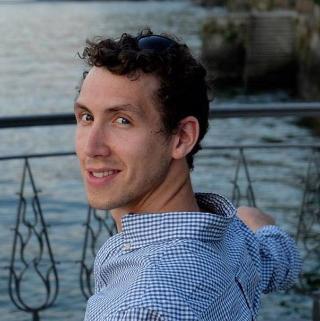Dr Richard Middlemiss
Published: 21 August 2019
Instrumentation for Geophysical Research

Dr Richard Middlemiss richard.middlemiss@glasgow.ac.uk
School of Engineering
Type of Fellowship: RAEng Research Fellowship
Are of Research: Instrumentation for Geophysical Research
Why did you choose to pursue a fellowship in your research career?
I’m keen to pursue a career in academia, and a fellowship was a great means to do this while having the independence to focus on my own ideas. I love the idea of sitting on the boundary between academia and industry, where engineering can be used to solve real-world problems and improve the world for society.
Why work at the University of Glasgow?
The work that I will do in my fellowship involves the use of nanofabrication tools. Glasgow has a world-class lab (the James Watt Nanofabrication Centre [JWNC]), that has a huge range of equipment that can be used to create these miniature devices. Glasgow also hosts the Institute for Gravitation Research (IGR), who played a large part in the discovery of gravitational waves. The IGR have a fantastic knowledge of precision measurement that I will also need for my own work. I worked in the IGR for the last decade and I’m keen to continue to collaborate with them!
How would you describe your research in 20 words or less?
I will make tiny sensors that will be used to look inside volcanoes in 3D, helping to forecast eruptions.
What is your research highlight?
I have spent the last decade making another type of miniature sensor. In the past it was always really delicate and I’ve broken many of them by mistake. Recently we made some design changes to make them more robust. We then shock tested them (essentially by mounting them on a sledgehammer and swinging it against a wall), and they didn’t break. This was pretty exciting because it means that we can start to use them in the field for practical applications.
What do you look for in a collaboration?
I particularly enjoy working with people who have a scientific problem that can be solved with my technology. This gives me the opportunity to learn about entirely different fields. Working with volcanologists has been a good example of this, and has given the added bonus of some fantastic field work opportunities in exotic locations! I think it’s also very important to work with people that you get on with on a human level – you can be at your most creative scientifically when socialising with your collaborators.
How do you see your research impacting society?
My sensors will be used to ‘see’ tiny changes in the density of the ground beneath us. By making networks of these sensors around volcanoes, you can start to build up a 3D image of the subterranean features by mapping these density variations. If you then monitor continuously, you can see things like magma moving around under the volcano, improving hazard forecasting, and ultimately reducing the risk to the millions of people globally who live in close proximity to active volcanoes.
What next?
My technology has the potential to be significantly cheaper than existing monitoring instrumentation. Since 8 of the 10 countries at greatest risk from volcanic activity are on the Official Development Assistance (ODA) list, it is important that technological solutions don’t cost huge amounts of money. In the future I’d like to see my sensors used on more active volcanoes around the world, particularly in countries that don’t have huge budgets to spend on scientific monitoring.
First published: 21 August 2019

